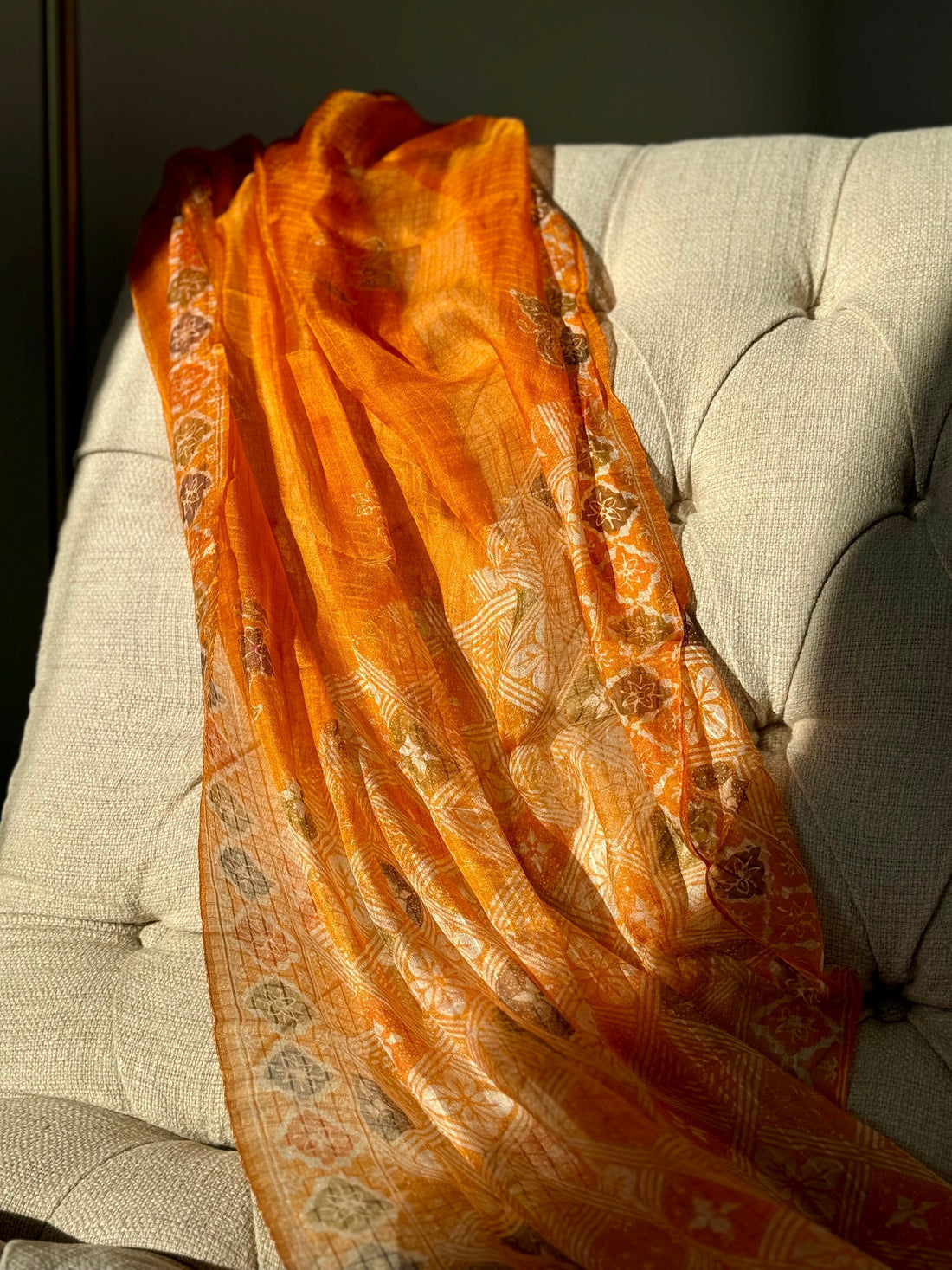
What is Silk? A Deep Dive into the Luxurious Fabric, Its Uses, and Benefits
Nikita BellaShare
For centuries, silk has been the fabric of royalty, luxury, and refinement. With its buttery softness, radiant glow, and impressive strength, silk remains one of the most sought-after textiles globally. But what exactly is silk, and why has it remained a staple in fashion and home décor for so long?
Let’s unravel the mystery behind this timeless fabric.
What is Silk?
Silk is a natural protein fiber produced by silkworms, specifically the Bombyx mori species. These tiny creatures spin silk threads to create their cocoons, which are then carefully harvested and processed into fabric. Unlike synthetic materials, silk is entirely natural, biodegradable, and known for its luxurious feel and impressive durability.
Its signature luster comes from the structure of the fiber itself. The triangular prism-like shape of silk strands allows them to refract light at different angles, giving the fabric its unique, iridescent appearance.
How is Silk Made?
Silk production, also known as sericulture, is a meticulous process that has been perfected over thousands of years. Here’s a simplified look at how silk is created:
- Silkworm Rearing: Silkworms are fed a steady diet of mulberry leaves until they begin spinning their cocoons.
- Harvesting Cocoons: Once the cocoons are fully formed, they are carefully collected.
- Thread Extraction: The cocoons are softened in warm water to loosen the silk threads, which can be carefully unwound—sometimes stretching up to 3,000 feet from a single cocoon.
- Spinning and Weaving: The delicate strands are twisted into threads, dyed, and woven into fabric.
This labor-intensive process is one of the reasons why silk is often considered a luxury textile.
Why is Silk So Coveted?
Silk isn’t just about aesthetics. It offers a range of benefits that make it stand out among natural fibers:
- Unmatched Softness: The smooth texture feels gentle on the skin, reducing irritation.
- Breathability: It regulates temperature, keeping you cool in summer and warm in winter.
- Moisture-Wicking: Silk naturally absorbs moisture, keeping you dry and comfortable.
- Hypoallergenic Properties: Resistant to dust mites, mold, and mildew, making it a great choice for sensitive skin.
- Durability: Despite its delicate appearance, silk is incredibly strong—stronger than steel of the same thickness!
Where is Silk Used?
Silk is one of the most versatile textiles, finding its place in multiple industries. Here’s how it’s commonly used:
1. Fashion and Apparel
Silk is a go-to fabric for:
- Dresses
- Blouses
- Ties and scarves
- Delicate lingerie
- High-end suits
- Its fluid drape and soft touch make it a favorite for both casual and couture fashion.
2. Home Décor and Bedding
Beyond clothing, silk adds a touch of sophistication to home interiors:
- Pillowcases and sheets
- Drapes and upholstery
- Decorative cushions
Because it’s naturally resistant to allergens, silk bedding is especially popular among those with sensitive skin.
3. Accessories and Luxury Goods
From silk-lined handbags to high-end scarves and pocket squares, this fabric is often incorporated into luxury accessories, enhancing their appeal and exclusivity.
Caring for Silk: Tips to Keep It Looking Pristine
Silk requires a little extra care to maintain its beauty. Follow these guidelines to extend its lifespan:
- Hand Wash or Dry Clean: While some silk items can be washed on a gentle cycle, hand washing or professional dry cleaning is often the safest option.
- Use Mild Detergent: Harsh chemicals can weaken silk fibers, so opt for a gentle detergent.
- Avoid Excessive Sunlight: Prolonged exposure can cause fading.
- Never Wring Silk: Gently press out excess water instead.
- Store Properly: Keep silk garments in breathable fabric bags to protect them from dust and moisture.
Is Silk Sustainable?
Silk is a natural fiber, making it biodegradable and eco-friendly compared to synthetic alternatives. However, traditional silk production raises ethical concerns due to the harvesting process, which often results in the loss of silkworms.
For those seeking cruelty-free alternatives, peace silk (also known as Ahimsa silk) allows silkworms to mature and emerge from their cocoons before the fibers are collected. Additionally, some manufacturers are adopting sustainable practices to minimize environmental impact.
Final Thoughts: Is Silk Worth It?
Silk is a fabric that embodies elegance, comfort, and longevity. Whether you’re investing in a silk blouse, luxurious bedding, or a statement scarf, you’re embracing a material with centuries of heritage and craftsmanship behind it.
While it requires special care, the beauty and benefits of silk make it a worthwhile addition to any wardrobe or home. If sustainability is a concern, look for ethical silk options that align with your values.
Next time you slip into a silk garment or rest your head on a silk pillowcase, take a moment to appreciate the artistry behind this remarkable fabric.
Looking to add silk to your wardrobe? Explore our collection of handcrafted silk scarves here: Mutiara Heritage Silk Collection.